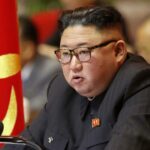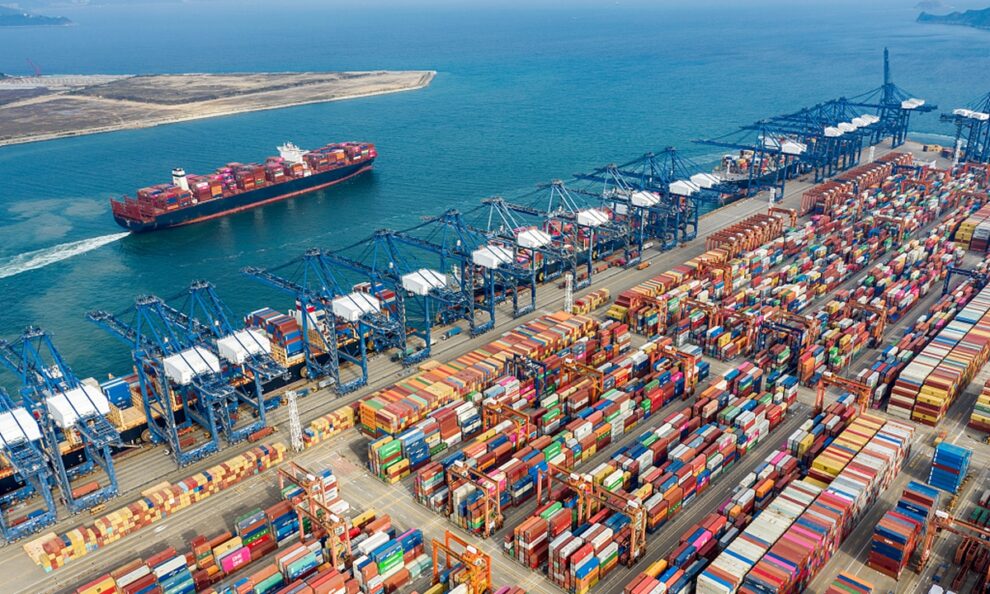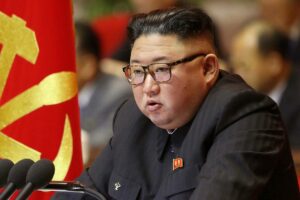Three of the four Indo-Pacific Economic Framework (IPEF) pillars may have been completed, but America’s inability to see through the trade deal aimed at countering China’s economic influence is a strategic failure.
Hopes of an agreement were dashed last week at the Asia-Pacific Economic Cooperation (APEC) forum, even before former US president Donald Trump threatened to “knock out” the initiative if he were to return to power.
The IPEF was supposed to fill the policy gap left by the Trump administration’s withdrawal from the Trans-Pacific Partnership (TPP) in 2017. It was styled as a novel economic agreement that provides a template for future economic engagement after years of rudderless drifting in the Indo-Pacific.
“You can count on the United States,” said Joe Biden at APEC. At its most basic level, the IPEF aimed to reassure America’s partners that it is still interested in a meaningful economic relationship with them. However, it has ostensibly fallen short of even that.
Southeast Asian observers should recognise that for domestic political reasons, Washington is no longer a champion of free trade. While they should continue engaging with the US on security issues, they should also be mindful that their region’s economic agenda is increasingly diverging from that of Washington’s.
The IPEF was challenging to negotiate from the outset, its demands and constraints a product of US domestic politics.
The lack of access to the US market removed a key incentive from the American negotiating toolkit. It was an effort to avoid a sensitive political issue: American public opinion has become generally less supportive of free trade due to the perception that cheap foreign goods are displacing American products, especially in key swing states and unions.
Believing that “deep trade liberalisation” failed to protect American jobs and capacity, Biden’s administration bucked decades of free trade promotion to aggressively subsidise favoured industries in its competition with China. US$39 billion in manufacturing incentives was allocated under the CHIPS Act alongside US$370 billion in investments for clean energy under the Inflation Reduction Act to grow the US industrial base.
Meanwhile, labour and environmental standards were always a hard sell to partners such as Vietnam and Indonesia. These US demands tapped on these growing sentiments against free trade.
A common rallying call was that trade deals need to ensure strong labour and anti-dumping standards so American workers can compete on a “level playing field” – not just with Chinese workers, but with supply chains linked to China as well.
Yet, the IPEF was still vulnerable to the domestic forces it sought to appease. As a White House initiative, the IPEF was unlikely to garner financial support from a split Congress and could also be cancelled with a simple executive order by a future president.
Negotiators likely understood that the odds were stacked against them. The timeframe to complete IPEF negotiations was also relatively short at two years, compared to seven years for the TPP.
Ultimately, after months of disquieting rumours, the end came when the finish line was in sight. Pushback from lawmakers, such as Senator Sherrod Brown who is facing a tough re-election campaign, derailed negotiations on the trade pillar, leaving IPEF on life support.
In some practical respects, the lack of an IPEF trade pillar does not significantly affect Southeast Asia. Regional governments were less interested in the content of the agreement than in securing US commitments.
Regional leaders such as Malaysian Prime Minister Anwar Ibrahim and Indonesian President Joko Widodo expressed support for IPEF’s focus on supply chains and sustainability. Yet, the agreement’s stringent demands, the absence of China and the lack of tangible benefits limited its economic value to members.
However, the incomplete IPEF lays bare the limits of US resolve on economic engagement. It was supposed to be the economic centrepiece of the Biden administration’s strategy for the Indo-Pacific, a region that covers nearly two-thirds of the world’s economy.
Instead, the region got a replay of Washington’s exit from the TPP. If IPEF’s goal was to show that the US is ready for a new economic relationship, it clearly failed to do so.
It adds to the evidence that the US is uninterested in discussing trade or abiding by external rules. In 2022, it declared it would not comply with a World Trade Organization (WTO) ruling that Trump’s 2018 steel and aluminium tariffs violated international trade rules. It dropped digital trade demands just before APEC for greater control over Big Tech’s data and software code.
The US is increasingly turning away from the free trade philosophy it used to espouse. Even though US officials have promised that IPEF talks will resume in 2024, they are unlikely to reach a final agreement with Trump’s threat to cancel the initiative hanging above their heads.
This broader trend is a disquieting reality for Southeast Asia, which thrives on trade and investment.
The US is still a key security partner in the face of a rising China. However, regional governments must not hesitate to forge their own path on trade.
Southeast Asia has many other agreements to engage with. Of note, the Regional Comprehensive Economic Partnership includes China, while the Comprehensive and Progressive Agreement for Trans-Pacific Partnership is a modified TPP which Mr Biden has already ruled out revisiting and to which China applied to join in 2021.
In addition, the expansion of Singapore’s Digital Economic Partnership Agreement with Chile and New Zealand, along with negotiations on the ASEAN-wide Digital Economy Framework Agreement, should continue apace.
The door should be left open for a future US administration to rejoin the region’s trade conversation. Unless and until that happens, however, Washington will only have itself to blame for missing out on shaping the global trading order for years to come and allowing China’s economic influence in the region to grow unimpeded.
Source : Channel News Asia















